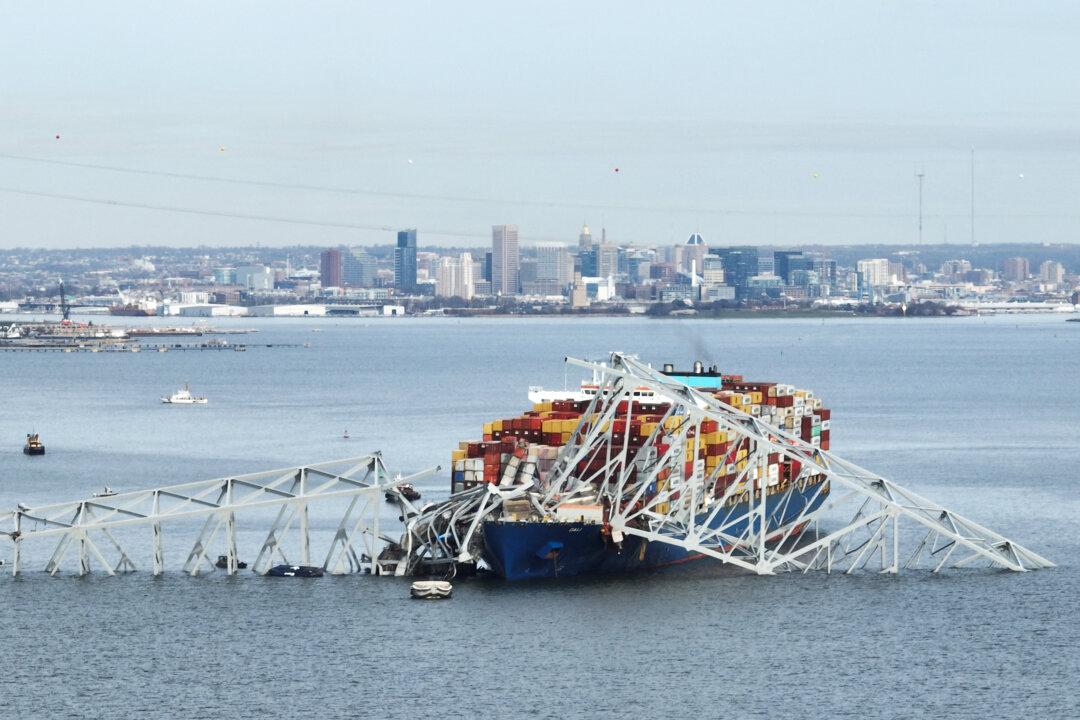The pilot of the cargo ship that struck Baltimore’s Francis Scott Key Bridge on March 26 radioed for help from nearby tugboats and reported a power loss just moments before the crash, according to federal safety officials.
Speaking to reporters during a press conference on March 27, the National Transportation Safety Board (NTSB) said the findings were based on audio from the ship’s voyage data recorder, or VDR, which is similar to a “black box” data recorder fitted to airplanes.





